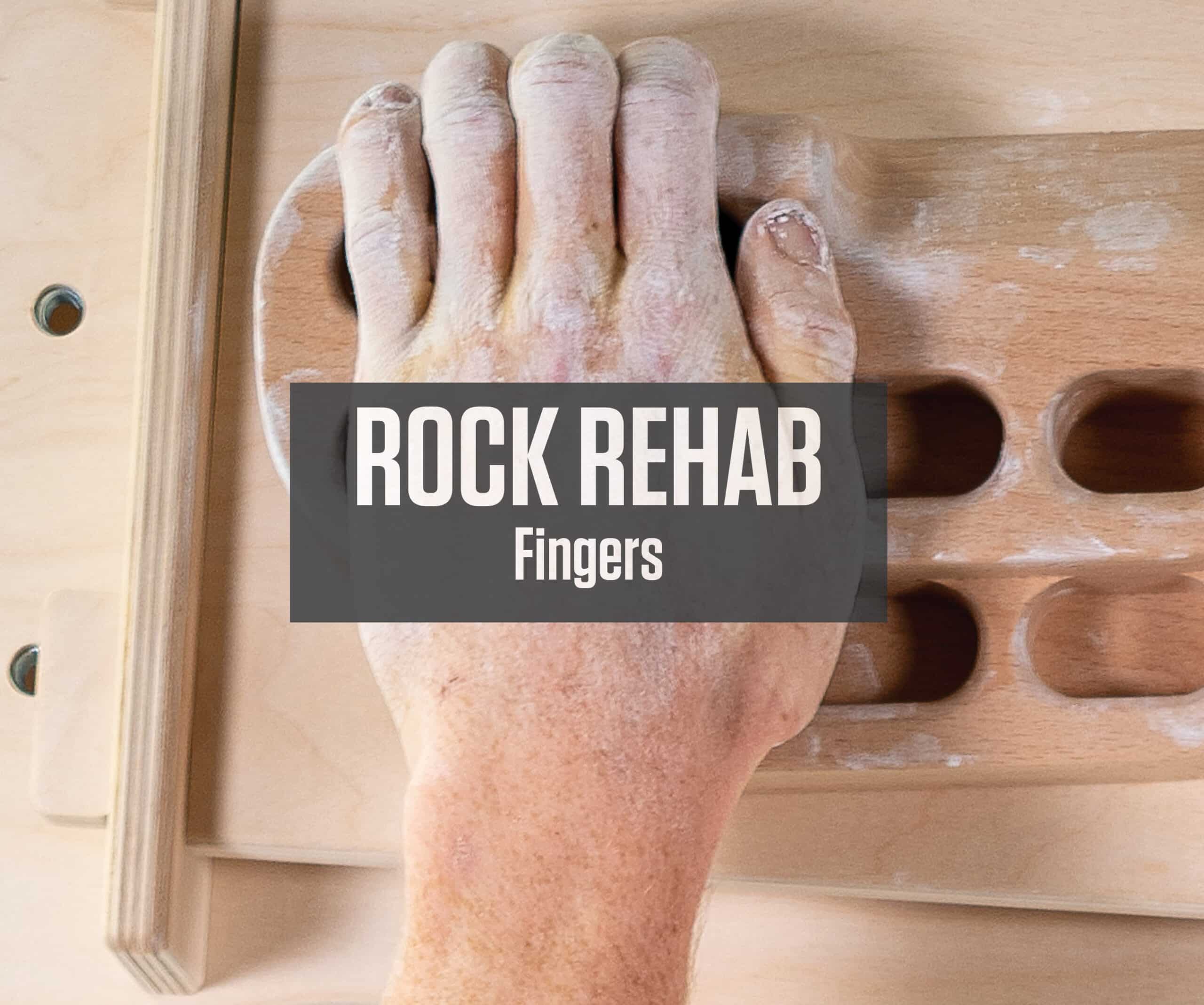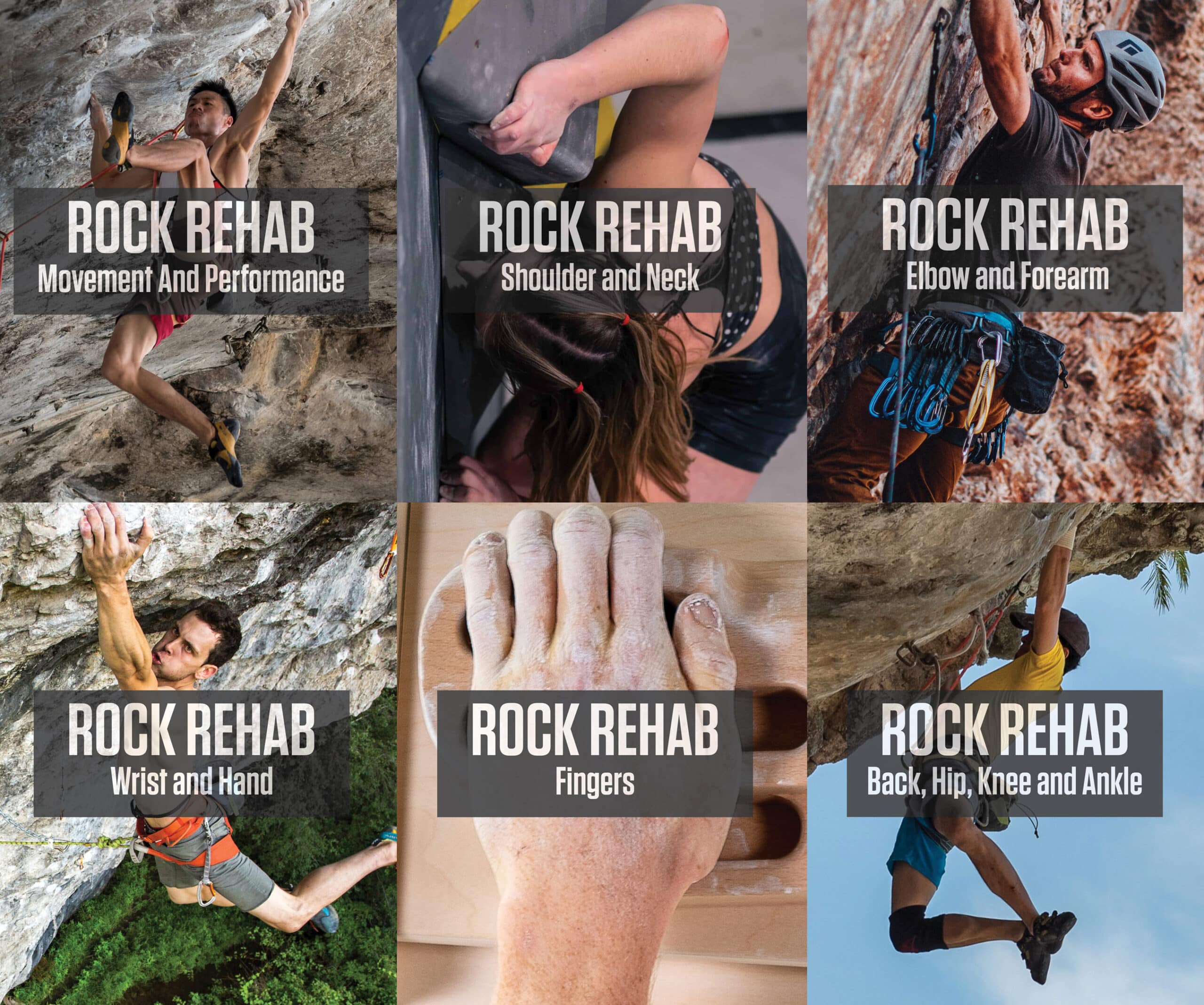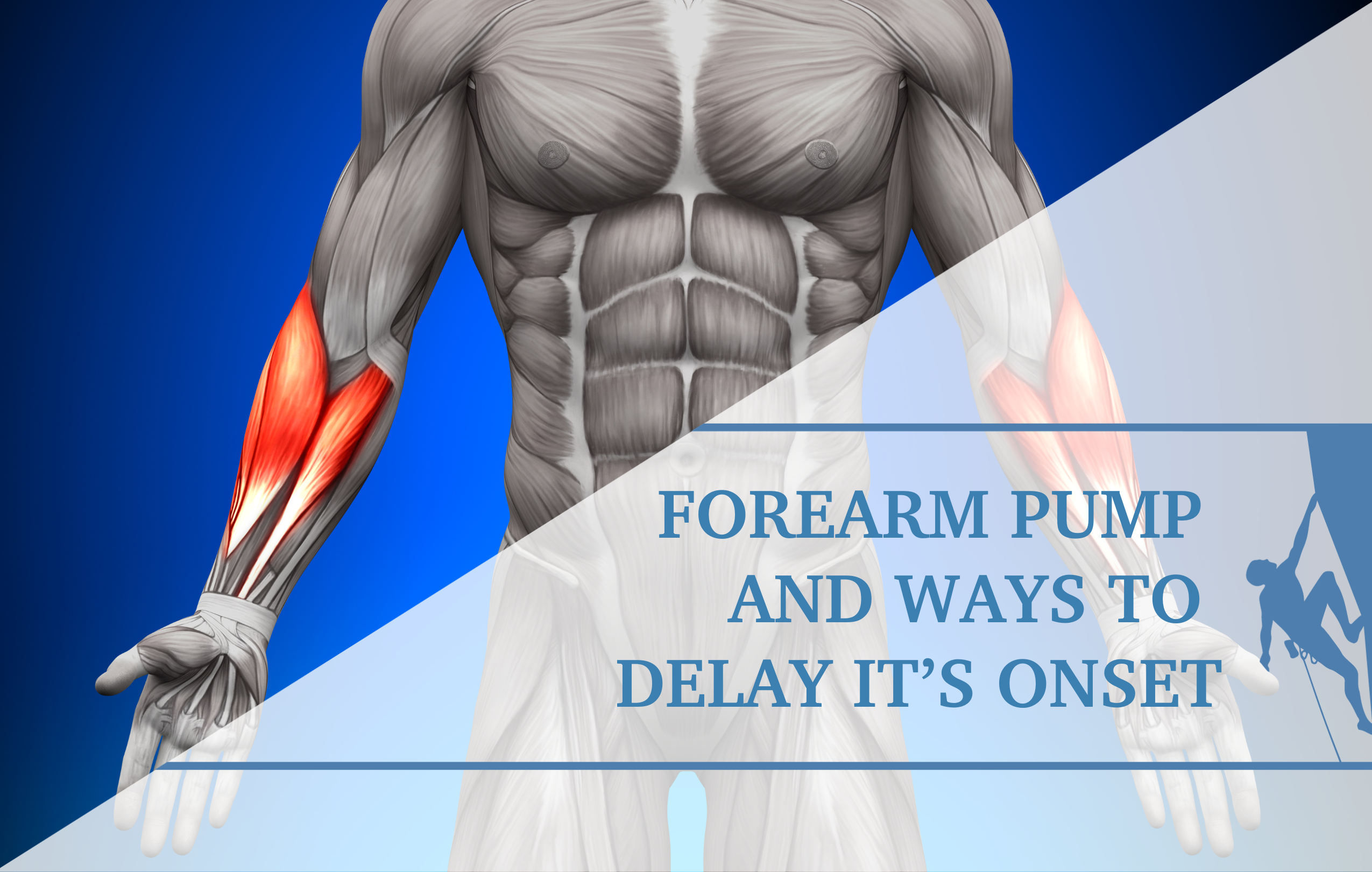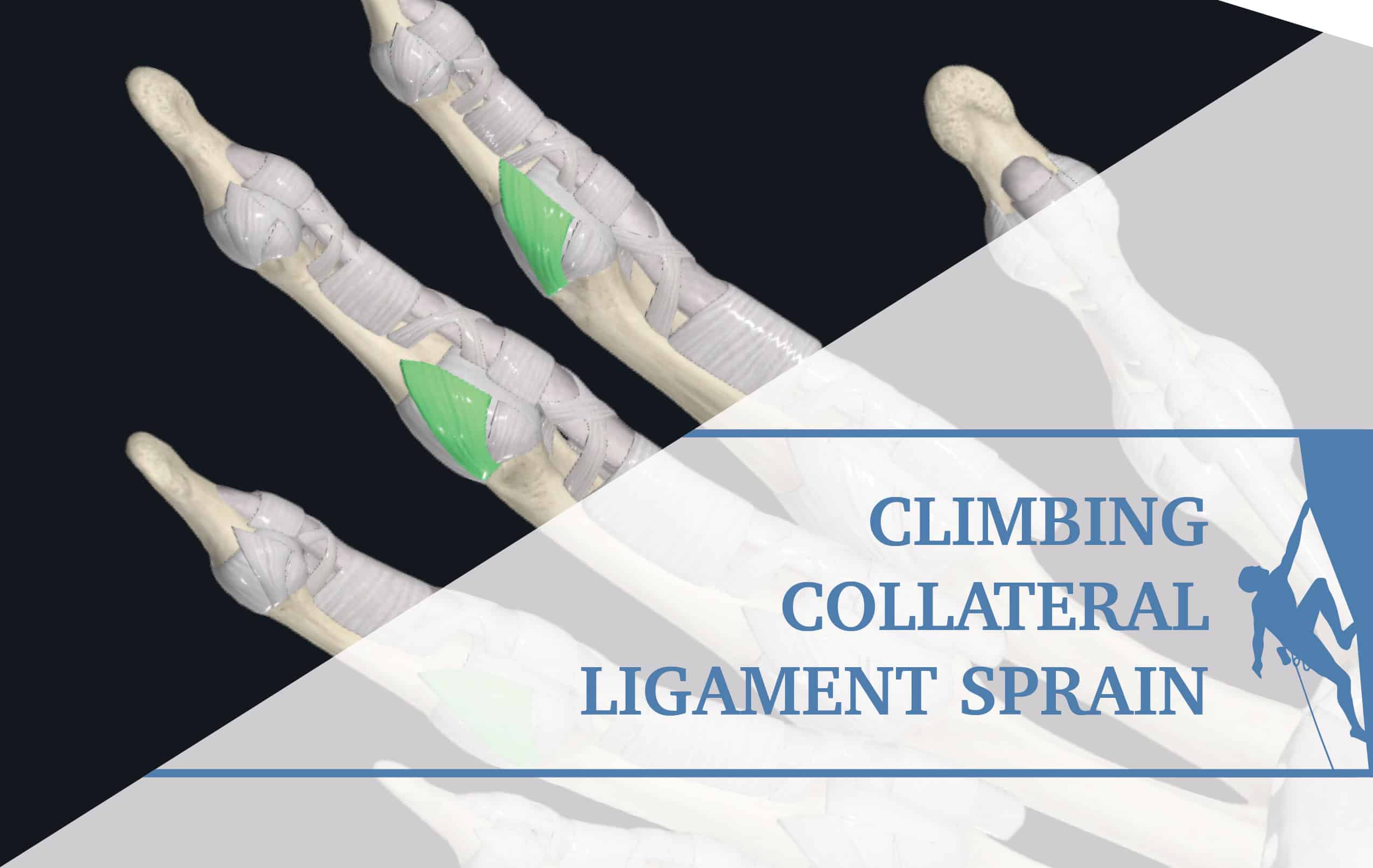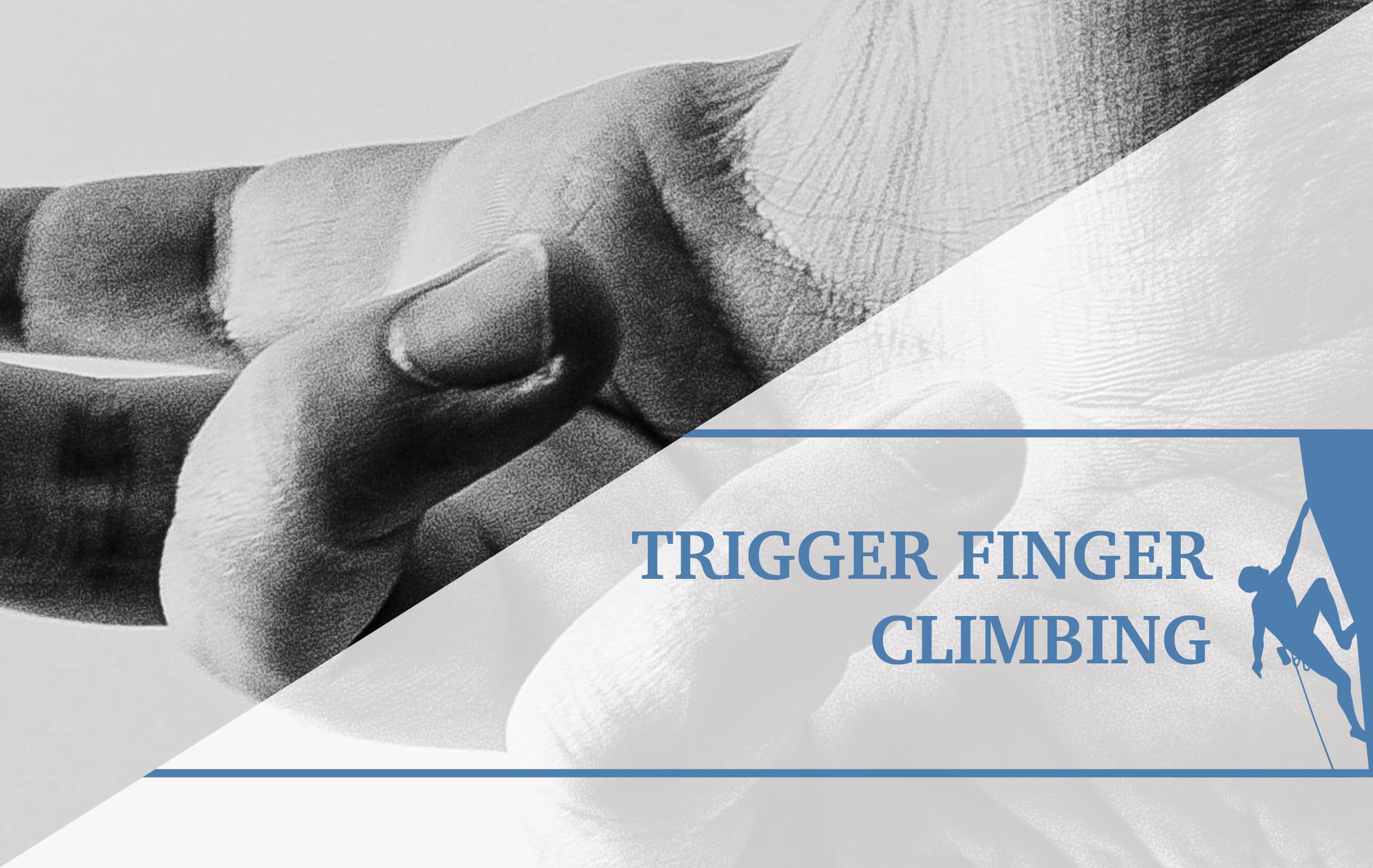Pulley Injury Anatomy, Biomechanics and Research
Finger pulley injuries are the most common injury with rock climbers. In order to understand pulley sprains, we need to understand the anatomy first. So, let’s discuss the pulleys in the fingers.
- Five of them are annular
- Three of them are cruciate
- The flexor digitorum superficialis and flexor digitorum profundus both pass under the A2 pulley
- Only the flexor digitorum profundus passes under the A4 pulley
If a climber has pain over the front aspect of their finger directly over the pulley, it may be an indicator of a a partial tear of rupture. The mechanism is oftentimes associated with an audible pop, oftentimes during a crimp grip. However, sometimes it occurs during the eccentric component of gripping when the fingertips are starting to open up. Additionally, the A2 is the most commonly injured pulley, followed by the A4. The ring and the middle fingers are the most commonly injured fingers. There are special tests and diagnostics that a clinician will go through to determine if a climber has a pulley injury. This includes a diagnostic ultrasound or potentially an MRI as well as a diagnostic clinical cluster.
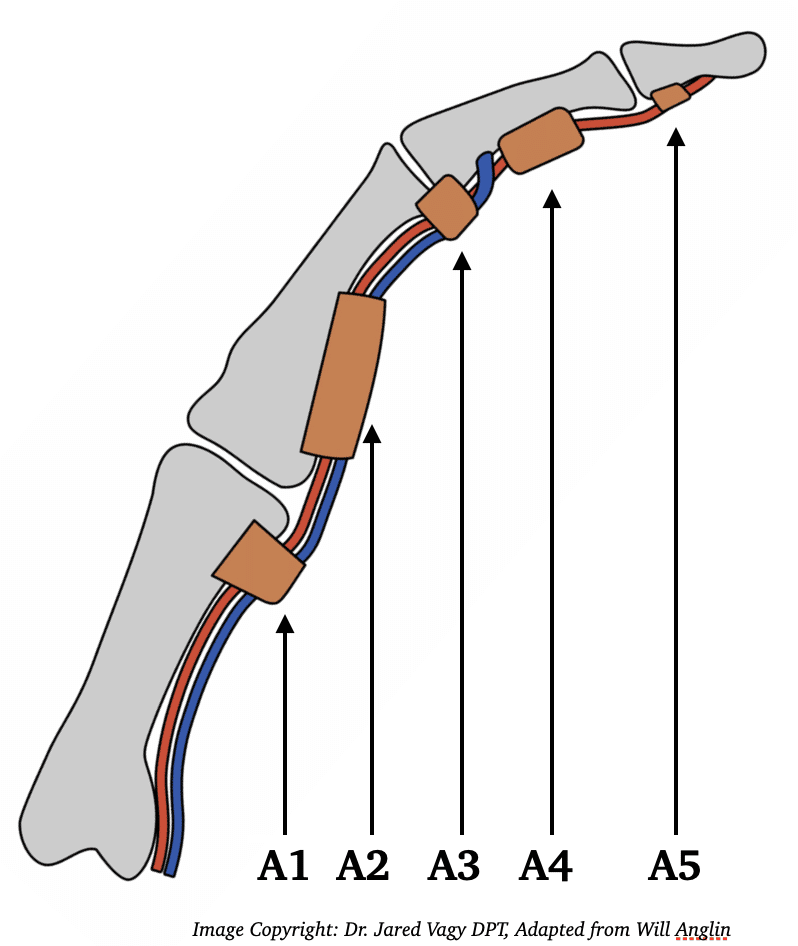
Anatomy
- 5 annular pulleys (A1–A5) and 3 cruciate pulleys (C1–C3)
- FDS and FDP both pass under A2 but only FDP passes under A4
Pain Location
- Front of the finger over the pulley
Mechanism
- Often associated with audible “pop”
- Commonly during eccentric gripping
Additional Information
- A2 most common followed by A4
- The ring finger and middle finger are the most common
See below for a video discussing the anatomy of pulleys. Once you understand the anatomy, the biomechanics of climbing and the stresses on the pulley begins to make more sense.
Pulley Injury Biomechanics and Research
In a series of studies, they were able to demonstrate three key concepts related to the pulleys. Schweizer and colleagues showed:
The amount of force on the A2 pulley is directly proportional to the external force at the fingertip.
Roloff and colleagues showed:
The amount of force on the A2 pulley is influenced by the angle at the PIP joint. Increased PIP flection leads to more force on the pulley.
Schweizer additionally showed in a study that:
A warm-up of 100 individual climbing moves of increasing intensity increased the amount of physiologic bowstring of the A2 pulley.
So, now that we know the key influences of pulley stress, it’s important to know the pulley mechanical properties. If we take a look at the below studies, we can see the unique properties of pulley. A study by Doyle and colleagues showed:
The A2 and A4 pulley are broad, strong and insert directly into the bone. The A1, A3, and A5 pulley are less rigid, attach to volar plates, and are not considered true fibro-osseus pulleys
So, this is why the A1, A3, and A5 pulleys are rarely injured while rock climbing, as they are more adaptable to tense forces and stress. They stretch and elongate, so they are less likely to rupture. A study by Chow and colleagues showed:
The A2, and A4 pulleys are the least deformable and have higher breaking strength than the A1, A3, and A5 pulleys.
A study by Schweizer and colleagues showed:
Recreational rock climbers could load the A2 pulley with forces between 380 and 700 newton’s, which equates to an average of about 54 kilograms or 120 pounds of force.
These studies provide us with a better view of the mechanical properties of the pulleys and potentially why the A2 and A4 pulleys are the most commonly injured pulleys while rock climbing.
In a study by Vigouroux and colleagues that looked at six 5.13b climbers who underwent maximal effort crimping in a specialized apparatus while EMG recorded muscle and tendon work and force equations were input into a biomechanical model. See an example of the testing apparatus below

What they showed in this study was that tendon tensions were equally distributed between the flexor digitorum superficialis and flexor digitorum profundus in the slope or grip. While during the crimp grip flexor digitorum profundus is a prime finger flexor. They also showed when crimping, compared to open gripping, that the force on the A4 pulley increases 3.9 times, and the force on the A2 pulley increases 31.5 times. So, this is why it’s very common for climbers to injure their A2 or possibly their A4 pulley during crimping.
Let’s take a look at another study by Vigouroux and colleagues. This study goes a bit more in-depth into the actual prevalence of finger pulley injuries and rock climbers.
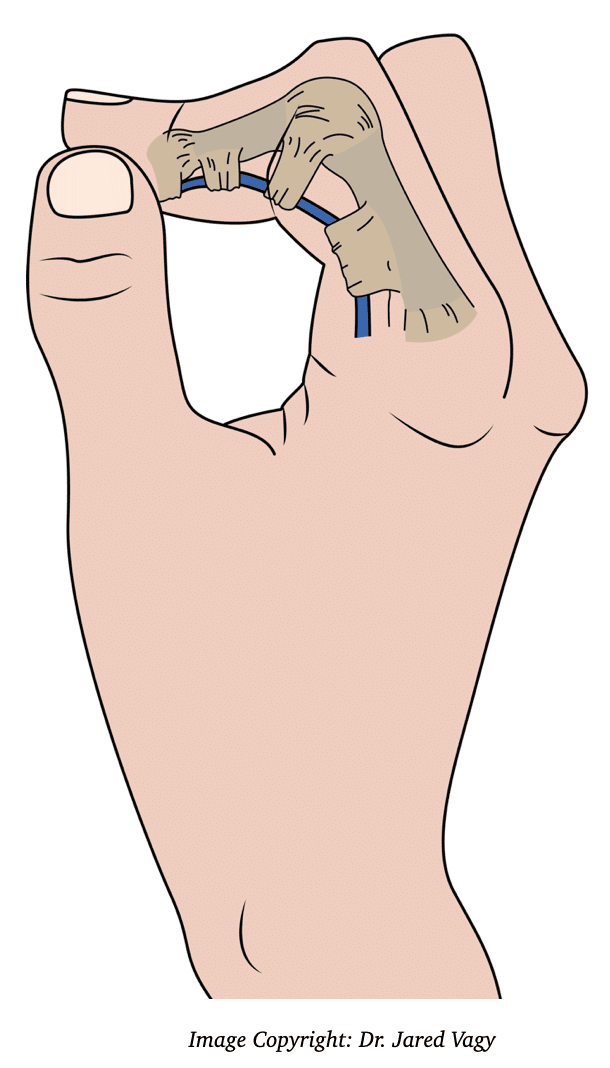
In this study, eight climbers were recruited to exert a maximal forefinger force into a specific sport climbing finger posture on a grip. The researchers measured external fingertip forces, as well as finger joint postures, and they used that data to develop a biomechanical model of the four fingers.
The study showed that the fingertip force intensities applied to the index and the middle fingers were higher than those observed in the index and the little finger. And the pulley forces of the ring and middle fingers were close to their rupture thresholds, while that’s not the case for the index and the ring fingers.
So, this gave us a biomechanical rationale for why potentially the ring finger, as well as the middle finger pulleys, are most commonly injured with rock climbers.
Diagnosing a Pulley Injury with Imaging
Let’s go over how finger pulley injuries are diagnosed with imaging. Ultrasound is highly sensitive and specific in diagnosing pulley injuries and is the initial imaging technique of choice. Pulley injuries can be classified and separated into 4 grades based on the location and severity. Take a look at the below study by Lutter and colleagues; we can see that point injuries are separated into four different grades.
- Grade I is a pulley strain
- Grade II is a complete tear of the A3 or A4 pulley or a partial tear of the A2,
- Grade III is a complete tear of the A2 pulley, and
Grade IV is separated into IVa and IVb.
- Grade IVa includes multiple pulley ruptures, either A2/A3 or A3/A4 that show no major clinical bowstringing, ultrasound proof that the flexor tendon can be repositioned towards the bone, therapy was started less than ten days after the injury, and there was no contracture in the finger.
- Grade IVb are multiple pulley ruptures of either A2/A3 or A3/A4 with obvious clinical bowstringing, an A2/A3/A4 rupture, singular pulley rupture with a FLIP phenomenon where the pulley flips underneath the flexor tendon, singular pulley rupture with increasing contracture, or a single pulley rupture with a secondary condition that’s therapy-resistant and has tenosynovitis.
Now What?
- Now that you understand the anatomy, biomechanics, and research related to pulley injuries, you can then learn how to treat them.
- Click here to read how to rehab an injured pulley.

References
- Schweizer A. Biomechanical properties of the crimp grip position in rock climbers. J Biomech. 2001;34:217-223.
- Roloff, I., Schöffl, V. R., Vigouroux, L., & Quaine, F. (2006). Biomechanical model for the determination of the forces acting on the finger pulley system. Journal of biomechanics, 39(5), 915-923.
- Schweizer A. Biomechanical properties of the crimp grip position in rock climbers. J Biomech. 2001;34(2):217–23
- Doyle JR. Palmar and digital flexor tendon pulleys. Clin Orthop Relat Res. 2001;383:84–96.
- Chow JC, Sensinger J, McNeal D, Chow B, Amirouche F, Gonzalez M. Importance of proximal A2 and A4 pulleys to maintaining kinematics in the hand: a biomechanical study. Hand (NY). 2014;9(1):105–11.
- Schweizer A. Biomechanical properties of the crimp grip position in rock climbers. J Biomech. 2001;34(2):217–23.
- Vigouroux, L., Quaine, F., Labarre-Vila, A., & Moutet, F. (2006). Estimation of finger muscle tendon tensions and pulley forces during specific sport-climbing grip techniques. Journal of biomechanics, 39(14), 2583-2592.
- Vigouroux, L., Quaine, F., Paclet, F., Colloud, F., & Moutet, F. (2008). Middle and ring fingers are more exposed to pulley rupture than index and little during sport-climbing: a biomechanical explanation. Clinical biomechanics, 23(5), 562-570.
- Lutter, C., Tischer, T., & Schöffl, V. R. (2021). Olympic competition climbing: the beginning of a new era—a narrative review. British Journal of Sports Medicine, 55(15), 857-864.
Courses for Medical Providers and Coaches
Want to learn more ways to assess, diagnose and treat climbing shoulder and neck injuries? Check out the online course below to expand your knowledge and skillset in the management of rock climbing injuries. Click the course to learn more!
About The Author

Jared Vagy is a doctor of physical therapy who specializes in treating climbing injuries. He is the author of the Amazon #1 best-seller “Climb Injury-Free,” teaches Climbing Injury Professional Education for Medical Providers, and is the developer of the Rock Rehab Protocols. He has published numerous articles on injury prevention and lectures internationally. Dr. Vagy is on the teaching faculty at the University of Southern California, one of the top doctor of physical therapy programs in the USA. He is a board-certified orthopedic clinical specialist. He is passionate about climbing and enjoys working with climbers of all ability levels, ranging from novice climbers to the top professional climbers in the world.
For more education, check out the Instagram page @theclimbingdoctor
- Disclaimer – The content here is designed for information & education purposes only and the content is not intended for medical advice.

